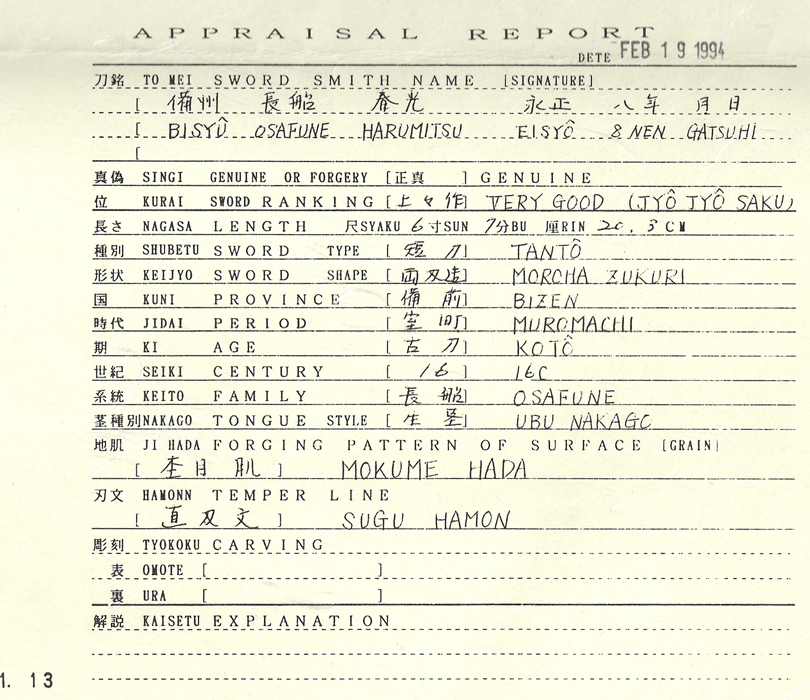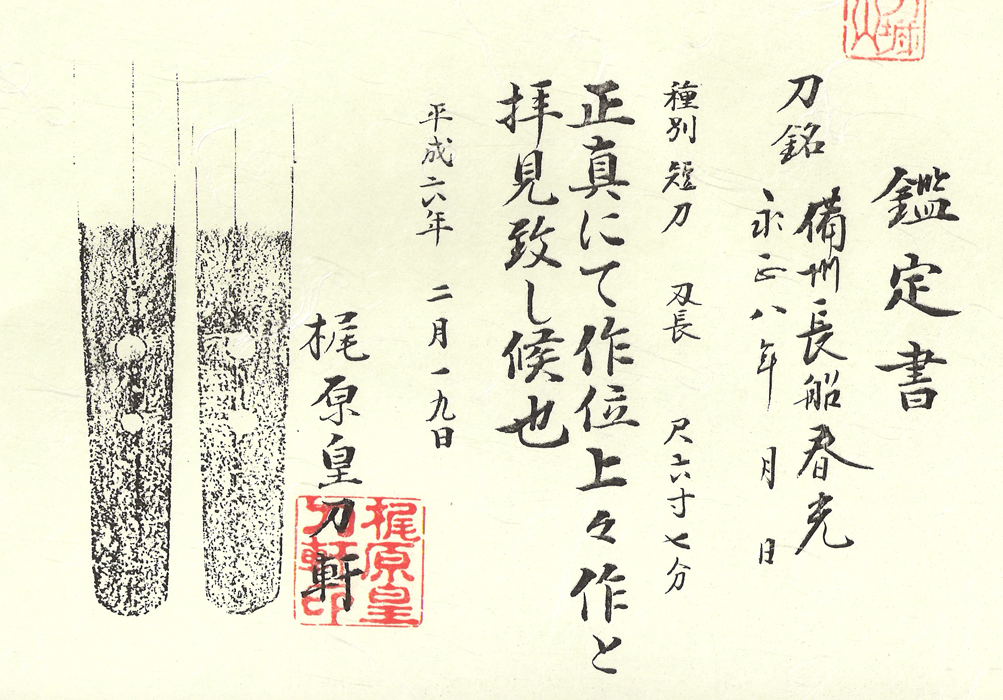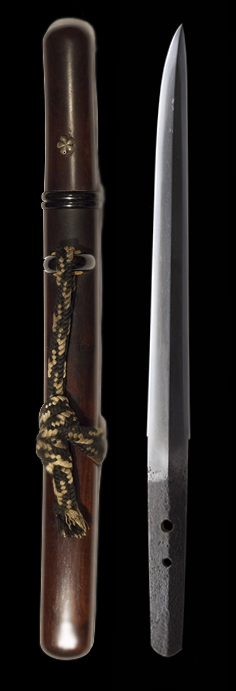|
| |||||||||||||||||||||||||||||||||||||||
Hamon : Nioi deki suguha with abundant ko-nie. Hataraki includes nijuba, sunagashi, inazuma, kinsuji and some thick nioi ashi here and there.
Kitae : Mokume covered in ji-nie. The ji-nie is entirely composed of ko-nie and is evenly dispersed all over the ji. Chikei is also present.
About this sword : This is a Bizen school tanto by the well regarded smith Harumitsu. This wonderful tanto was made during the Eisho nengo and is dated 1511. This was the working period of the Shodai or first generation Jurozaemon-no-jo Harumitsu, the maker of this tanto. The second generation is listed in most books as being active near the end of the 16th century - well too far from the date of 1511 to be the maker of this sword. Jurozaemon-no-jo Harumitsu was known to be skilled at suguha and his works are rated Wazamono for their excellent cutting ability by the Yamada group of sword testers. He was a grandson or, the third or younger son, of Jirozaemon-no-jo Katsumitsu. Jurozaemon-no-jo Harumitsu can be viewed as a representitive smith of the Bizen tradition in the mid Muromachi period. The same can be said for this sugata, as it is commonly thought of as a Bizen school shape. The workmanship of this blade shows all the fine features we expect to see in finer works. The nioi-guchi is well controlled and evenly tempered. Hataraki in the hamon is lively and abundant. Kinsuji and inazuma are especially impressive, dancing in and out of the nioi-guchi. The jigane is covered in a sheet of ji-nie. The ji-nie is all ko-nie and evenly dispersed. The sugata of this sword is the kissaki moroha zukuri shape. This sugata has a hamon on both sides of the double-edged blade. This is a difficult sugata to make and temper evenly. It shows Harumitsu's skill very well. Rust has made the kanji on the nakago difficult to read but the mei and date are fully intact and the nakago is ubu. The sword is in high quality old sashikomi polish with some scratches and minor blemishes. All the activities in the blade can be clearly studied.
The koshirae with this tanto is a lovely Edo Period example made from imported sandal wood. It features horn fittings, silver threaded menuki and a fine old hand crafted sageo in great condition. This is the type of kosirae we normally think of as being worn by a older gentleman. It is quite understated and dignified. The sword is also accompanied by a 1994 paper issued by Kotoken Kajihara that atests to both the quality of the sword and the authenticity of the mei. A wonderful opportunity in all regards.
Price $3500





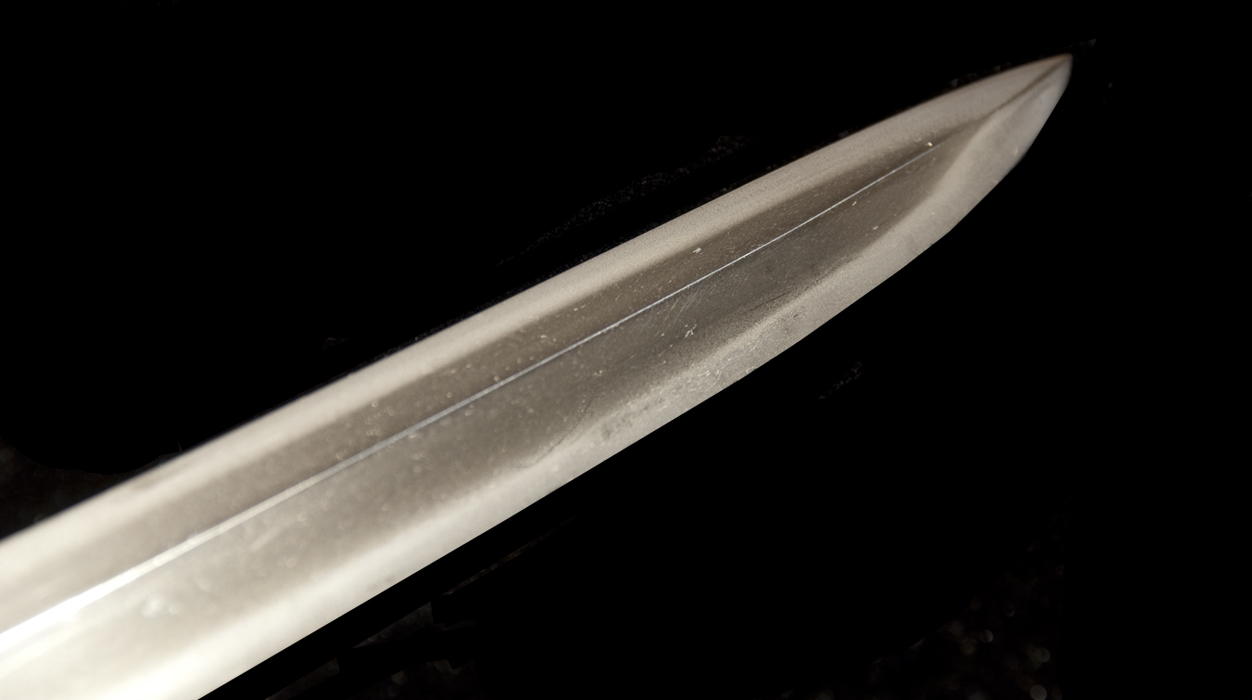
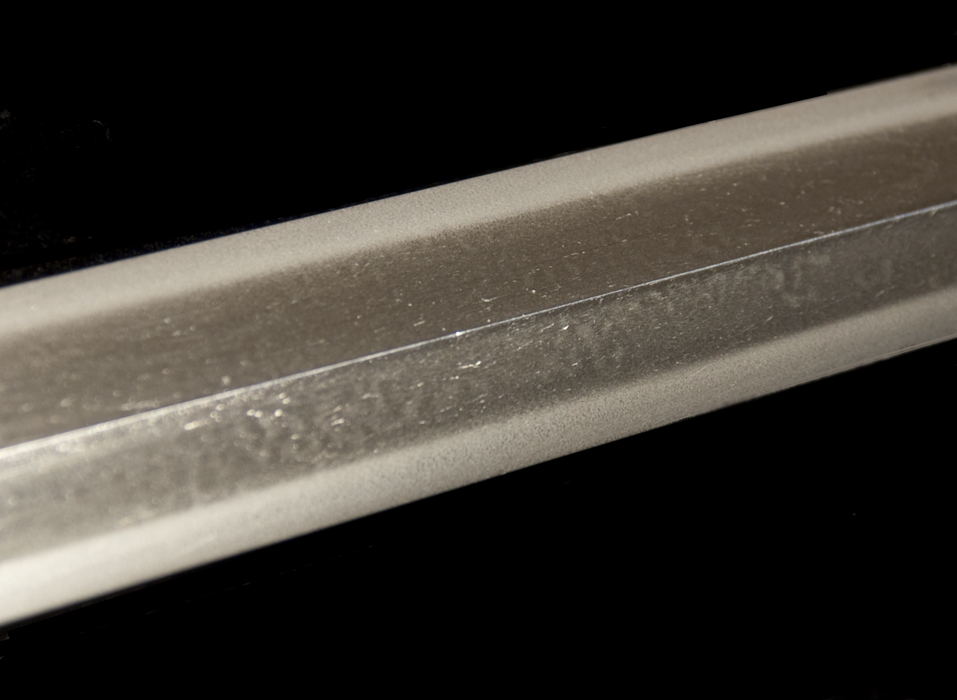
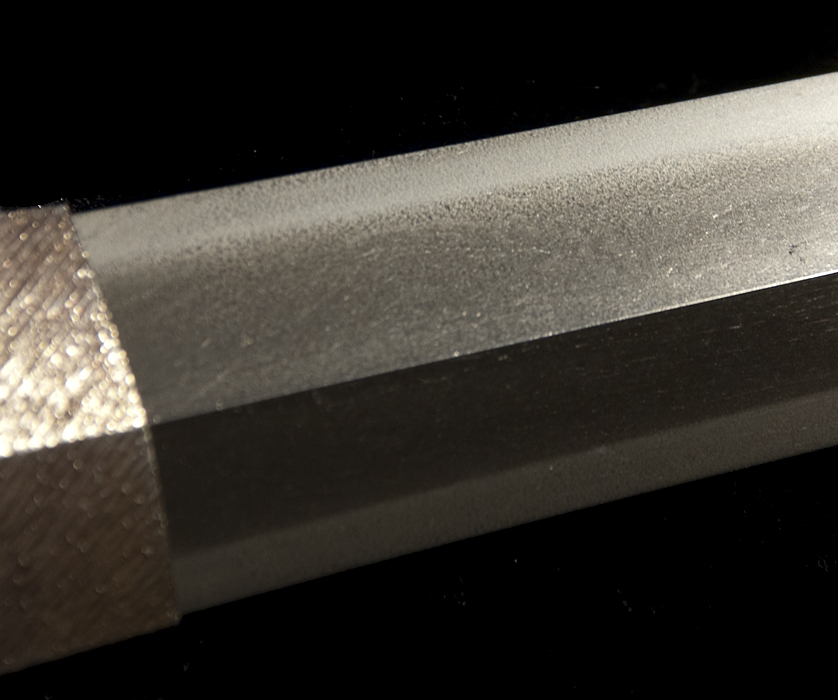
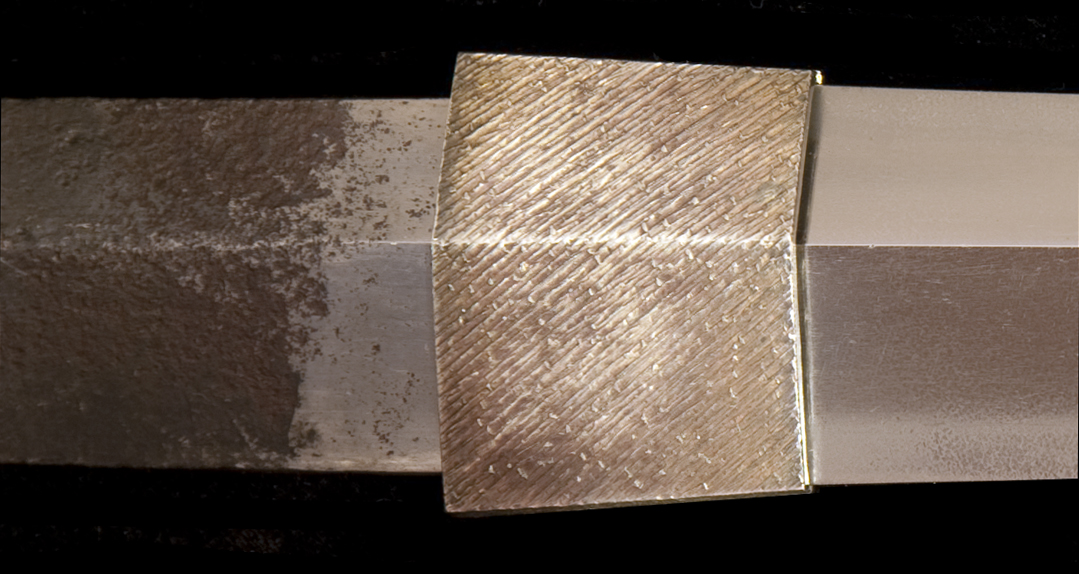



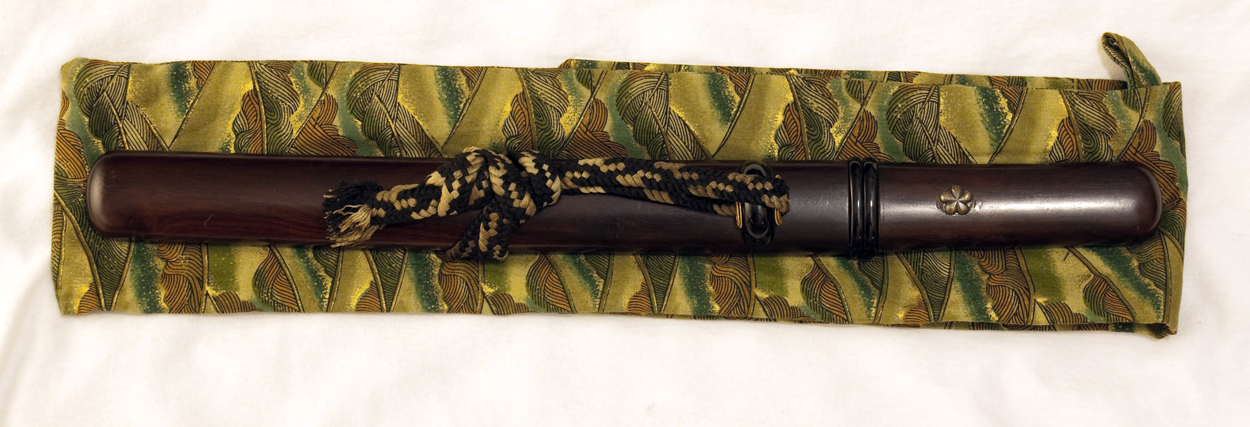


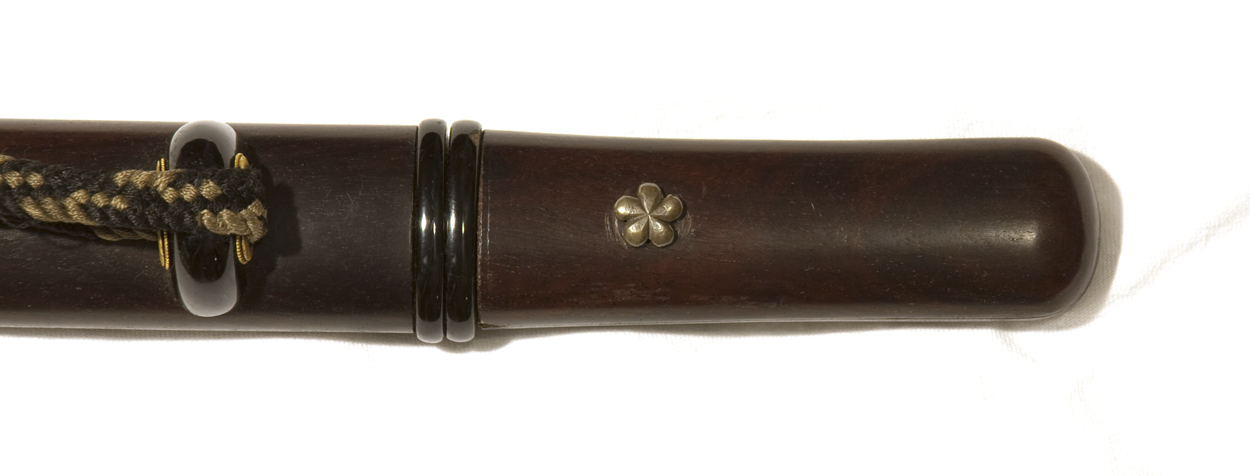
 |

|
